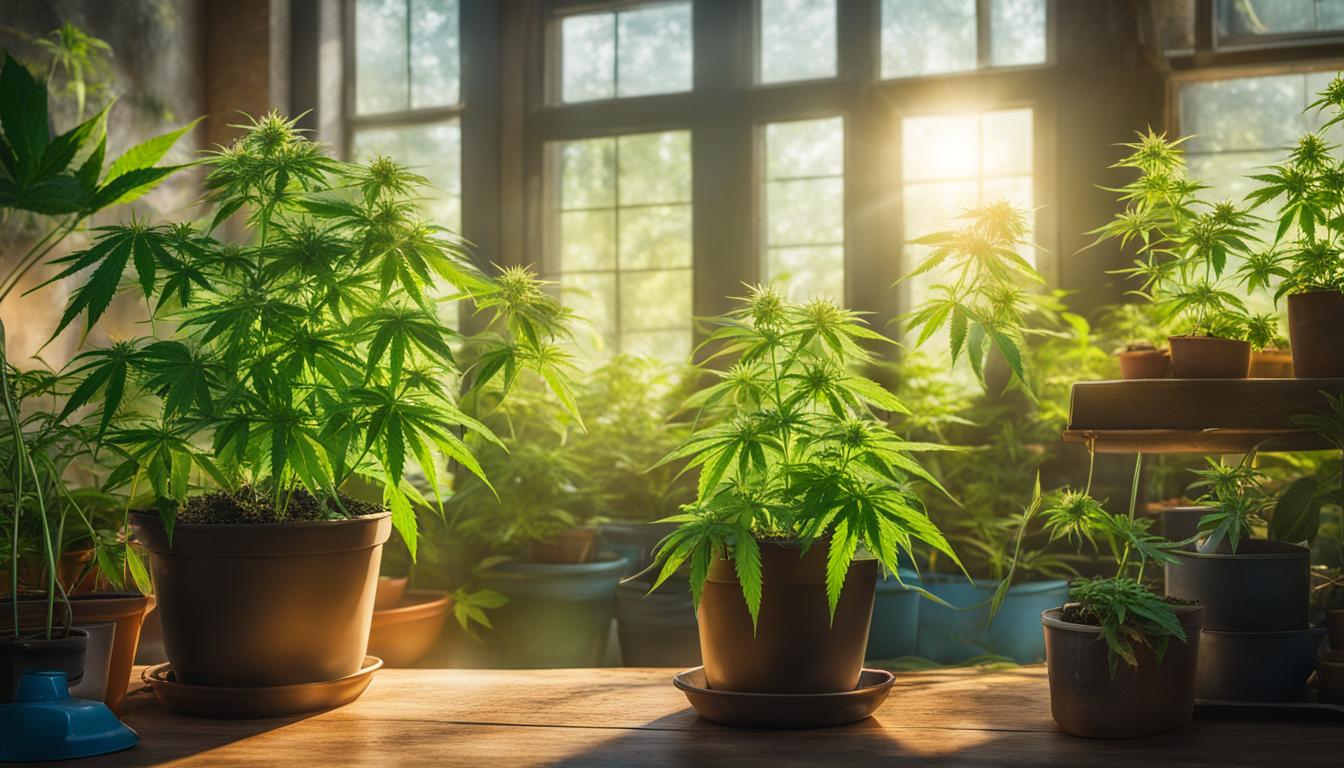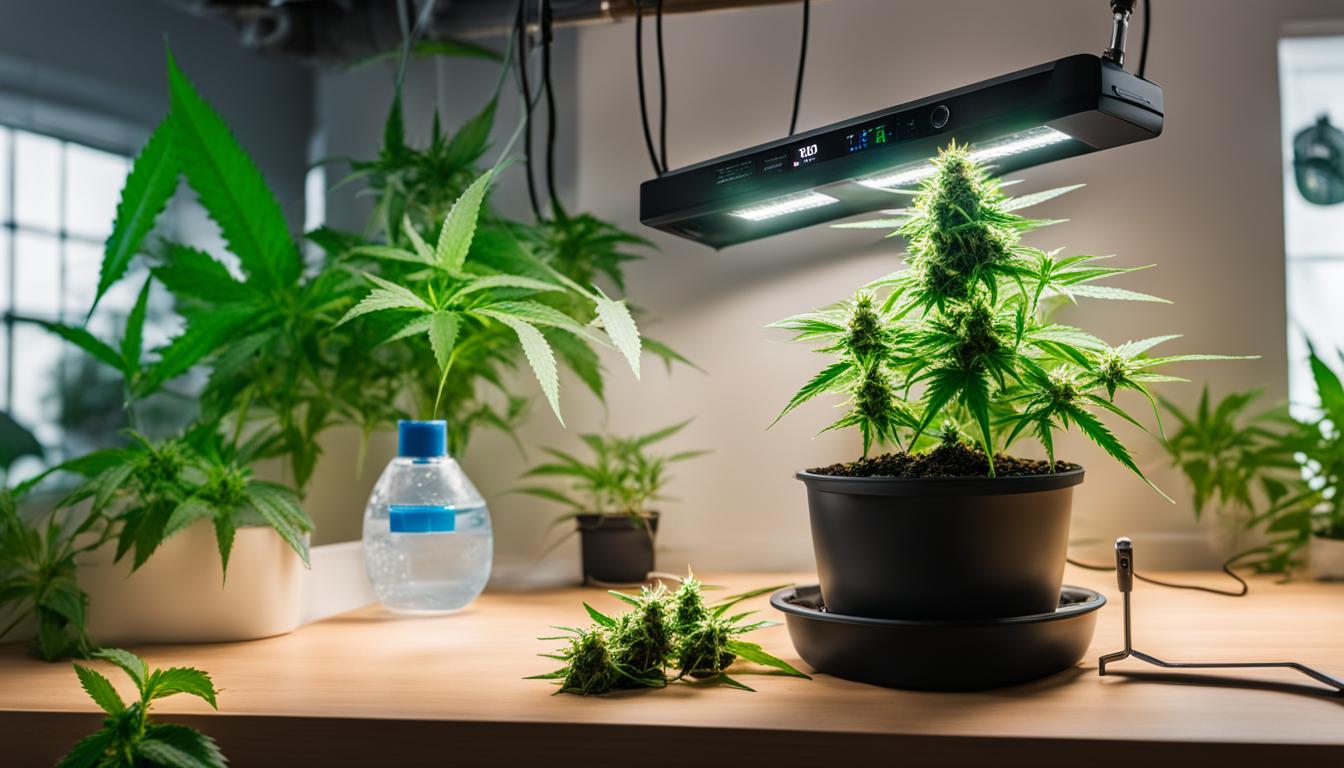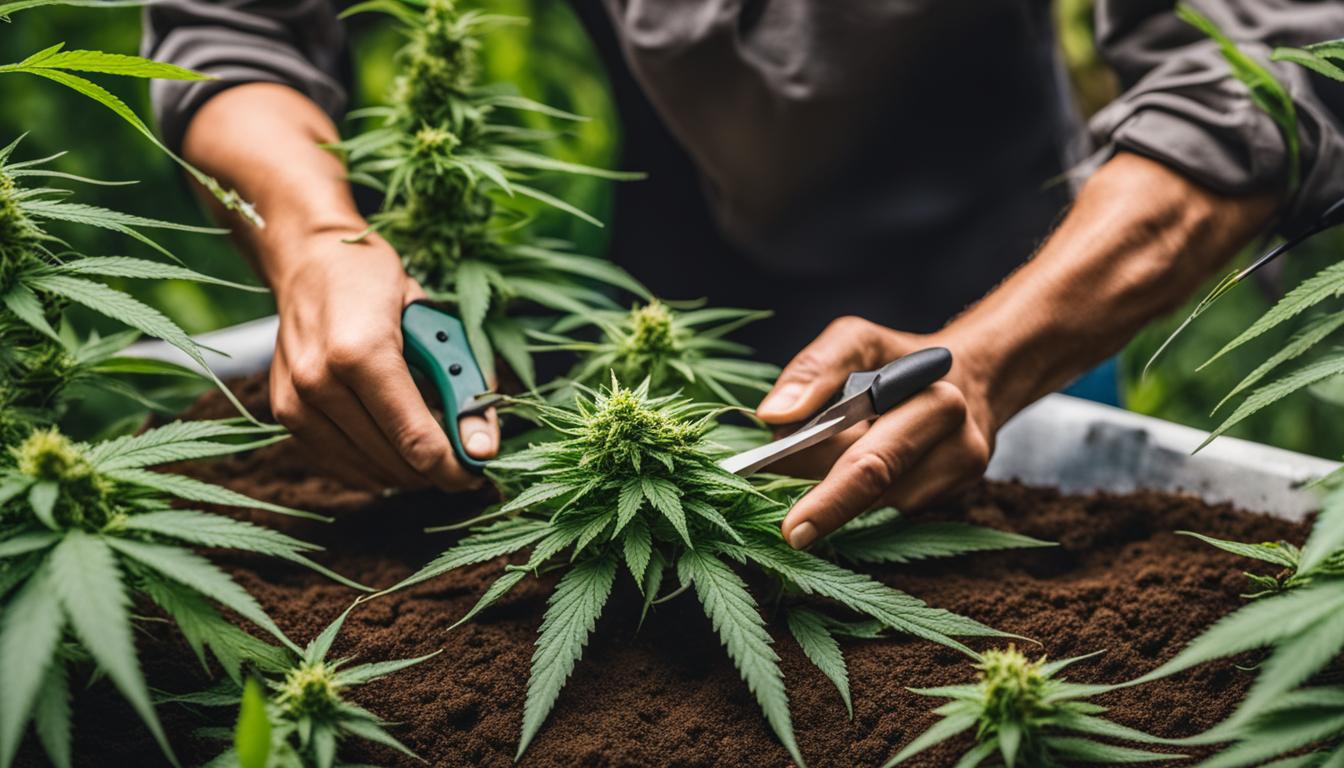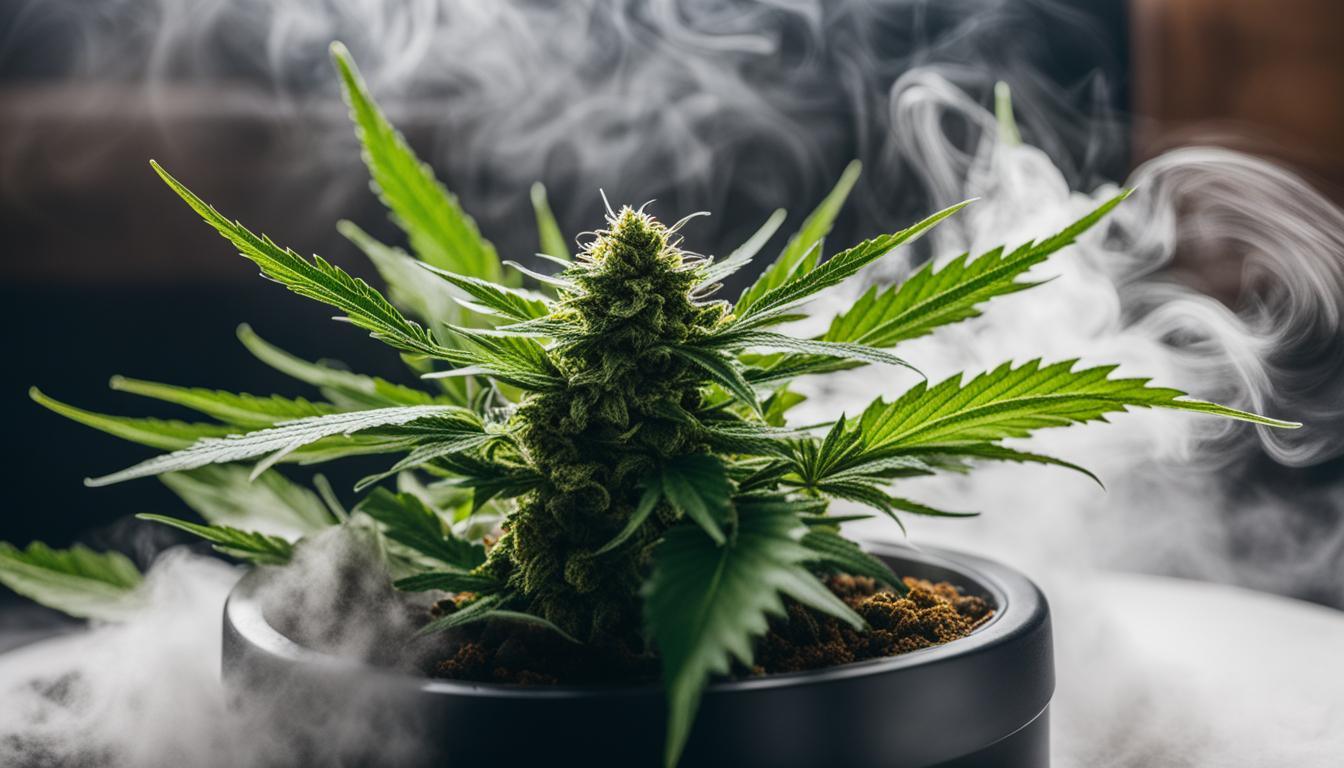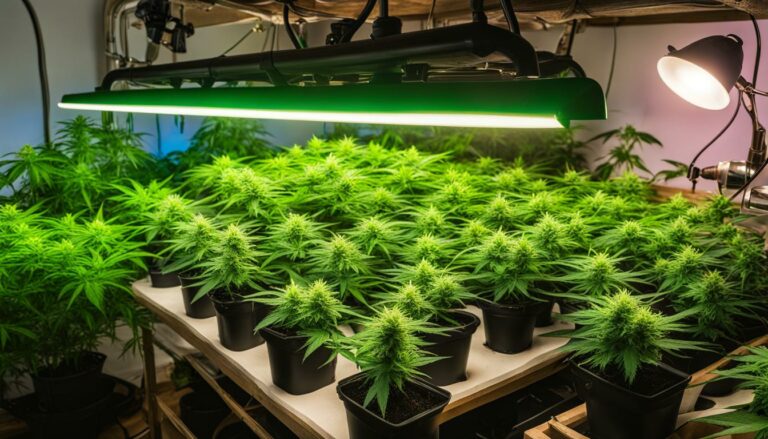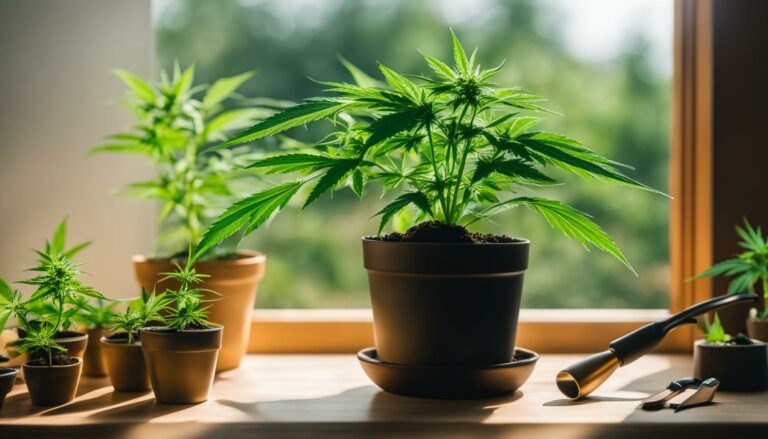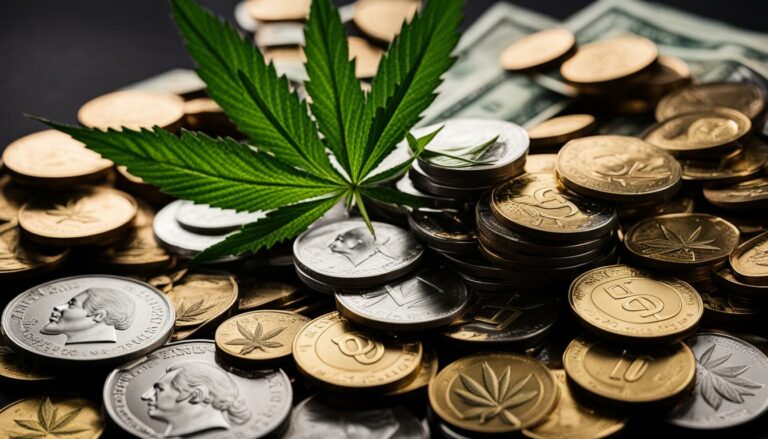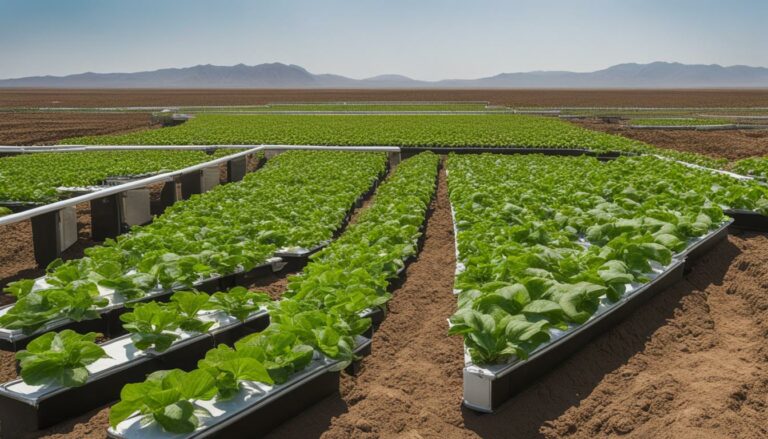Maximizing Your Cannabis Plant Yields
Welcome to our guide on maximizing cannabis yields and increasing the quality of your harvest. If you’re looking to optimize your cannabis plant growth and improve your cannabis output, you’ve come to the right place. In this article, we will explore various techniques, strategies, and tips for achieving higher cannabis yields. From selecting high-quality seeds to implementing effective plant training methods, optimizing light intensity, automating the growing environment, pruning, controlling vapor pressure deficit (VPD) and relative humidity (RH), to harvesting at the right time, we will cover all aspects necessary for enhancing your cannabis harvest. So, let’s dive in and discover the techniques that will take your yields to new heights.
Starting with High-Quality Seeds
When it comes to maximizing cannabis yields, one of the most important factors to consider is starting with high-quality seeds. The genetic strain of your plants plays a significant role in determining the quantity and quality of your harvest. With a plethora of genetic strains available in the market, selecting the right one is crucial for achieving optimal results.
By investing in high-quality seeds, you can set the foundation for a successful cannabis cultivation endeavor. These seeds are carefully bred to produce plants with desirable traits such as high yields, potent THC content, and attractive terpene profiles. Additionally, high-quality seeds are more resilient to pests, diseases, and environmental stressors, ensuring a healthier and more productive crop.
Furthermore, the genetic strain of your cannabis plants can impact their value on the open market. Certain strains have gained popularity among consumers, commanding higher prices due to their unique characteristics and effects. By choosing high-quality seeds and finding the right genetic strain, you can maximize both your yield and the value of your final product.
It is important to note that not all strains are created equal in terms of yields and market value. It is recommended to conduct test grow runs to evaluate different strains and determine the one that best suits your needs. By carefully selecting high-quality seeds, you can give your cannabis cultivation efforts a head start towards achieving abundant and profitable yields.
The Art of Manipulating Plant Growth Direction
When it comes to maximizing cannabis yields, one powerful technique that growers can employ is manipulating the plant growth direction. This technique allows for better light distribution and increased bud development potential. There are several methods that can be used to achieve this, including the Low Stress Training (LST) technique, the Screen Of Green (scrOG) method, and supercropping.
The LST technique involves gently bending the plants’ stems to encourage horizontal growth, creating a wider and more even canopy. This allows for more efficient light penetration, ensuring that every part of the plant receives adequate light. With the scrOG method, a net or screen is used to control the vertical growth of the plants, forcing them to grow horizontally. This technique maximizes the use of available space and promotes uniform bud development. Supercropping, on the other hand, involves strategically bending the stems without breaking them, stimulating new growth and creating additional bud sites.
By implementing these techniques, growers can optimize the structure of their cannabis plants, allowing for better light absorption and more efficient use of available resources. The result is higher yields and improved overall quality. However, it is important to note that these methods require careful attention and skill to ensure that the plants are not damaged during the manipulation process.
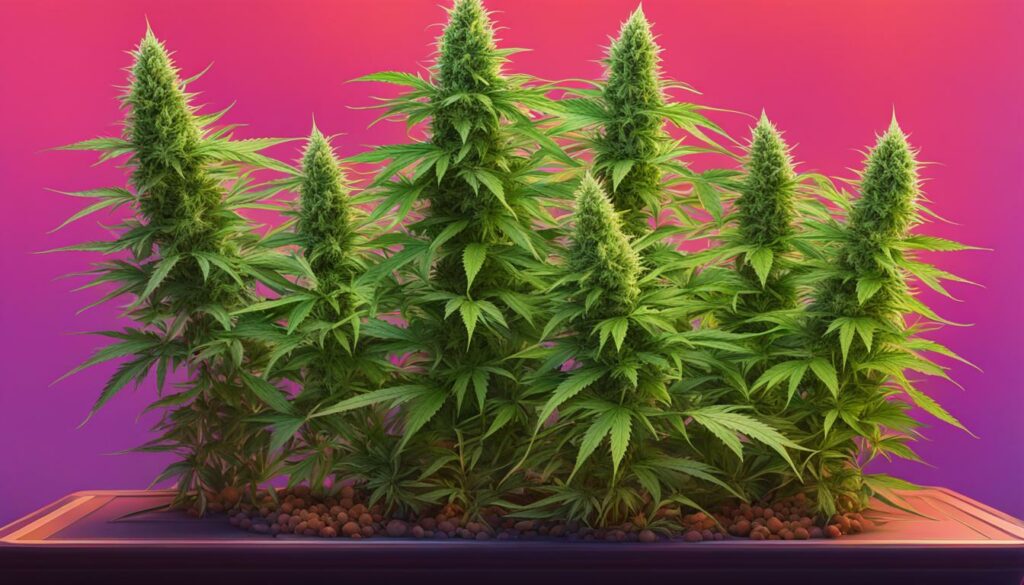
Benefits of Manipulating Plant Growth Direction:
- Enhanced light distribution and penetration
- Increased potential bud sites
- Optimized use of available space
- Improved overall quality of the harvest
By employing these techniques and understanding the art of manipulating plant growth direction, cannabis growers can unlock their plants’ full potential and achieve bountiful harvests.
Increasing Light Intensity
When it comes to maximizing cannabis yields, increasing light intensity is a crucial factor to consider. Adequate light exposure ensures optimal growth and development during the vegetative and flowering stages of the cannabis plants. Whether you are growing your cannabis indoors or in a greenhouse, providing the right amount of light is essential for achieving high-quality yields.
In an indoor grow setup, artificial lighting is commonly used to supplement natural sunlight. LED grow lights are gaining popularity due to their energy efficiency and customizable light spectra. These lights can be adjusted to provide the specific light intensity and wavelengths that cannabis plants need at different stages of growth. This allows growers to optimize light conditions and maximize yields throughout the plant’s life cycle.
In a greenhouse environment, growers have the advantage of utilizing natural sunlight, which can provide the full spectrum of light that cannabis plants require. However, it is important to carefully manage light exposure to prevent overexposure or light deprivation. By strategically positioning the plants and utilizing shading techniques, growers can ensure that the plants receive the right amount of light intensity for optimal growth and maximum yield.
It is worth noting that while increasing light intensity can contribute to higher cannabis yields, it is important to consider the cost of power consumption. High-intensity lighting systems can significantly impact power bills, especially in large-scale cultivation operations. Finding the right balance between light intensity, power consumption, and the overall profitability of your cultivation endeavor is essential for maximizing yields effectively.
Automated Control of the Growing Environment
In the quest to maximize cannabis yields, automated control of the growing environment is a game-changer. By leveraging environmental-controlled automation equipment, growers can streamline and optimize various aspects of the cultivation process, ultimately leading to higher yields and improved quality.
One crucial area where automation shines is in the control of temperature and humidity. Maintaining the ideal temperature and humidity levels is essential for maximizing plant growth and preventing mold outbreaks. With automated systems, growers can achieve precise control over these factors, ensuring that plants thrive in the most favorable conditions.
Another key benefit of automation is in nutrient delivery and monitoring. By automating the nutrient delivery process, growers can ensure that plants receive the correct nutrients in the right amounts at the appropriate times. This eliminates the risk of over or underfeeding, resulting in healthier and more productive plants. Additionally, automated nutrient monitoring systems allow growers to closely monitor nutrient levels, making adjustments as needed to maintain optimal plant health.
Automation in the growing environment is a game-changer for cannabis cultivation. By taking control of temperature, humidity, and nutrient delivery through environmental-controlled automation equipment, growers can optimize plant growth, prevent mold outbreaks, and ensure precise nutrient management. This level of automation not only saves time and effort but also leads to higher yields and better quality cannabis.
Table: Benefits of Automated Control in the Growing Environment
| Benefits | Explanation |
|---|---|
| Optimized temperature and humidity | Automated control ensures plants thrive in ideal conditions, promoting healthy growth and preventing mold outbreaks. |
| Precise nutrient delivery | Automation ensures plants receive the correct nutrients in the right amounts at the appropriate times, maximizing their potential. |
| Efficient nutrient monitoring | Automated systems allow growers to closely monitor nutrient levels, making adjustments as needed for optimal plant health. |
By implementing automation technologies in the growing environment, cannabis growers can revolutionize their cultivation practices. With precise control over temperature, humidity, nutrient delivery, and monitoring, growers can optimize plant growth, achieve higher yields, and produce top-quality cannabis. Embracing automation is a key step towards success in the ever-evolving cannabis industry.
Pruning Your Plants
Pruning plays a vital role in maximizing cannabis yields by optimizing plant growth and development. By strategically removing excess foliage, such as canopy leaves, you can improve light penetration, airflow, and mold prevention. Pruning also helps create a more even canopy, allowing for better distribution of resources and reducing competition among plant branches.
“Pruning is like sculpting your plants, shaping them to maximize their potential. It allows you to create a healthier and more productive garden,” says horticulture expert Dr. Emily Johnson.
When pruning, it’s crucial to focus on removing larger leaves that shade lower parts of the plant. By doing so, you direct more light to the lower branches, stimulating their growth and encouraging the formation of dense, resinous buds. This technique, known as lollipopping, removes unnecessary foliage from the lower part of the plant, allowing energy to be concentrated on the most productive areas.
Key Strategies for Effective Pruning:
- Remove large fan leaves that block light from reaching lower branches
- Keep an even canopy by trimming excessive growth from dominant branches
- Prune yellowing or dead leaves to prevent nutrient waste and potential disease
- Use clean and sharp tools to avoid introducing pathogens
Remember, each strain may require slightly different pruning techniques, so it’s essential to observe and understand the specific needs of your plants. By mastering the art of pruning, you can shape your cannabis plants into healthy, robust, and high-yielding specimens.
| Benefits of Pruning | Techniques |
|---|---|
| Improved light penetration | Lollipopping: Removing lower foliage |
| Enhanced airflow and reduced risk of mold | Canopy management: Removing excess growth |
| Reduced competition among branches | Topping and FIMming: Removing the main shoot |

Visual representation of the pruning techniques used to maximize cannabis yields.
Understanding the Relationship Between VPD and RH
In order to maximize cannabis yields, it is essential to understand the relationship between vapor pressure deficit (VPD) and relative humidity (RH). By optimizing this relationship, growers can achieve larger yields, improved quality, and optimum plant growth.
Vapor pressure deficit refers to the difference between the moisture saturation and existing moisture levels in terms of pressure within the growing environment. It plays a crucial role in determining how effectively plants transpire and take up water and nutrients. By maintaining an optimal VPD, growers can ensure that their plants are functioning at their peak performance.
Relative humidity, on the other hand, measures the percentage of moisture saturation in the air. It is important to control relative humidity levels to avoid issues such as mold, disease, and nutrient deficiencies. Understanding the right balance between VPD and RH is essential to create the ideal environment for cannabis plants to thrive.
Why is VPD important for cannabis cultivation?
When VPD is within the optimal range, plants can efficiently transpire and take up nutrients, resulting in larger yields and improved quality. The proper VPD range varies depending on the stage of growth, with higher VPD values during the vegetative stage and lower values during the flowering stage.
During the vegetative stage, higher VPD values can help promote faster growth and nutrient uptake. This is because the plants are actively transpiring and growing, and a higher VPD can increase the rate of water and nutrient absorption. Growers should aim for a VPD range of 0.8-1.2 kPa during this stage.
During the flowering stage, a lower VPD is recommended to reduce the risk of stress and encourage bud development. This is because the plants are focusing on flower production rather than vegetative growth. It is ideal to maintain a VPD range of 0.4-0.8 kPa during this stage to achieve optimum plant growth and maximize yields.
| VPD Range (kPa) | Stage of Growth |
|---|---|
| 0.8-1.2 | Vegetative |
| 0.4-0.8 | Flowering |
It is important to note that maintaining the ideal VPD range requires careful monitoring of temperature, humidity, and airflow within the growing environment. By providing the right conditions, growers can ensure that their cannabis plants thrive and produce the highest yields possible.
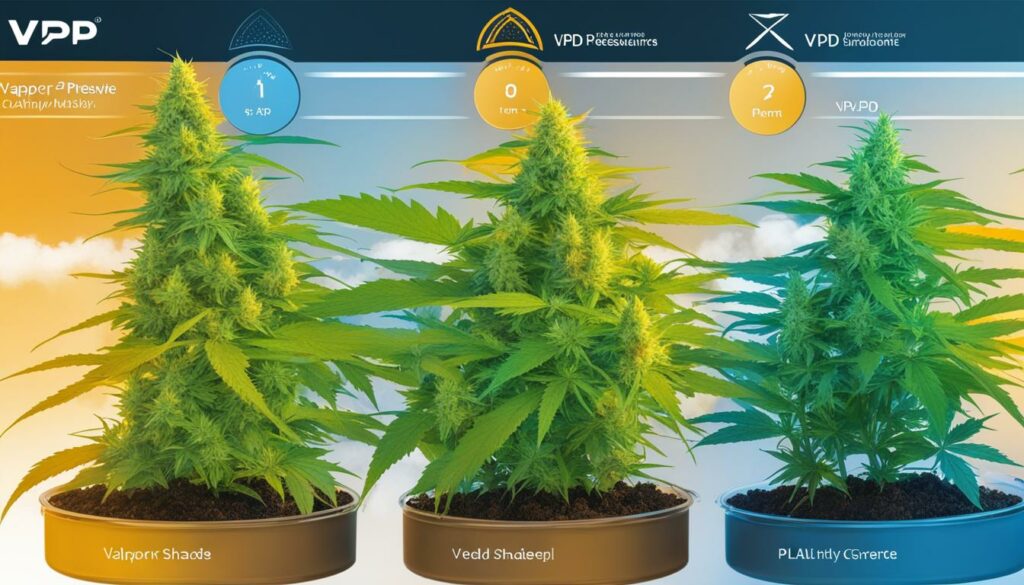
Proper Harvesting at the Right Time
Harvesting your cannabis plants at the optimal time is a critical factor in maximizing yields. The window period for harvesting is narrow, and timing is crucial to ensure you achieve the best possible results. Harvesting too early can result in underdeveloped buds with lower potency, while harvesting too late can lead to a loss of potency and desired cannabinoids.
When determining the right time to harvest, there are several indicators to consider. Flower pistils, commonly known as hairs, change color and curl inwards as the buds mature. Monitoring these pistils can help you identify when the buds are ripe and ready for harvest. Additionally, examining the trichomes, the small resin glands on the buds, is another essential method. Trichomes change from clear to cloudy or amber when the buds are at their prime, indicating the highest levels of potency.
Proper harvesting not only affects potency but also affects the concentration of terpenes, the aromatic compounds responsible for the unique flavors and aromas of cannabis. Harvesting at the right time ensures that you capture the full spectrum of terpenes, maximizing the overall sensory experience of your cannabis. By paying close attention to these indicators and harvesting at the optimal time, you can achieve the highest possible quality and quantity of your cannabis yields.
| Indicator | Significance |
|---|---|
| Flower Pistils (Hairs) | Change color and curl inwards as buds mature |
| Trichomes (Resin Glands) | Change from clear to cloudy or amber when buds are at their prime |
| Terpenes | Aromatic compounds responsible for flavors and aromas |
Related Articles
- How to Maximize Yields in a Small Cannabis Grow Space?
- What Are the Best Techniques for Increasing Cannabis Flower Production?
- How Does Plant Training Affect Cannabis Yields?
- Can You Increase Cannabis Yields with CO2 Enrichment?
- What Role Does Genetics Play in the Yield Potential of Cannabis Plants?
Conclusion
Maximising cannabis yields is a journey that requires knowledge, dedication, and careful planning. By implementing various techniques and strategies, you can significantly increase the quantity and quality of your cannabis harvest. From selecting high-quality seeds to optimizing the growing environment, each step plays a vital role in maximising cannabis plant growth.
Starting with high-quality seeds is the first building block for success. By exploring different genetic strains and conducting test grow runs, you can find the perfect match for your needs. Remember, not all strains produce equal yields, so choose wisely to ensure you’re maximizing cannabis yields and increasing marijuana output.
Manipulating plant growth direction is another powerful technique for higher cannabis yields. Whether it’s Low Stress Training (LST), the Screen Of Green (scrOG) method, or supercropping, these methods help optimize the plant’s structure and create more potential bud development sites.
To achieve optimal growth, it’s crucial to focus on increasing light intensity. Finding the balance between natural sunlight and artificial lighting, while considering the cost of power, can positively impact your cannabis greenhouse yield. Additionally, automating the growing environment, pruning plants, understanding the relationship between VPD and RH, and harvesting at the right time all contribute to maximizing cannabis yields.
By implementing these techniques and following proper cannabis cultivation practices, you can unlock the full potential of your cannabis plants and enjoy bountiful and high-quality harvests.
FAQ
Why is starting with high-quality seeds important for maximizing cannabis yields?
Starting with high-quality seeds ensures that you have the best genetic strains for your cultivation needs. Different strains produce varying yields, and the genetic makeup also determines the value of the final product on the market.
What are some techniques for manipulating plant growth direction to increase cannabis yields?
Techniques such as Low Stress Training (LST), Screen Of Green (scrOG), and supercropping can be used to manipulate plant growth direction. LST involves bending the plants to encourage wider growth, scrOG uses a net or screen to promote horizontal growth, and supercropping bends the plants without breaking them to stimulate new growth.
How does light intensity affect cannabis yields?
Light intensity plays a crucial role in maximizing cannabis yields. Controlling light intensity during the vegetative stage prevents overstretching and promotes optimal growth. The choice between natural sunlight and artificial lighting should also consider the cost of power and the overall profitability of your cultivation operation.
How can automated control of the growing environment help maximize cannabis yields?
By automating temperature and humidity control, you can optimize plant growth and reduce the risk of mold outbreaks. Automated nutrient delivery ensures that plants receive the right amount of nutrients at the right time, avoiding deficiencies or excesses. This saves time, reduces human error, and promotes healthy plant growth.
Why is pruning important for maximizing cannabis yields?
Pruning removes large canopy leaves that block light from reaching lower parts of the plant, improving light penetration and overall growth. Pruning also enhances airflow around the plants, reducing the risk of mold and other issues. Proper pruning techniques promote wider growth and increase the potential for bud development.
What is the relationship between vapor pressure deficit (VPD) and relative humidity (RH) in maximizing cannabis yields?
Optimizing VPD is crucial for achieving larger yields, improved quality, and optimum plant growth. While RH measures air saturation with moisture, VPD determines the difference between moisture saturation and existing moisture levels in terms of pressure. VPD-based climate control allows better regulation of humidity levels and creates the ideal environment for your plants.
Why is proper harvesting at the right time essential for maximizing cannabis yields?
Harvesting too early results in low yields and lower potency, while harvesting too late leads to a loss of potency and desired cannabinoids. By observing factors such as flower pistils and trichomes, you can determine the optimal harvest time. Harvesting at the right time ensures that you maximize the quality and quantity of your cannabis yields.

